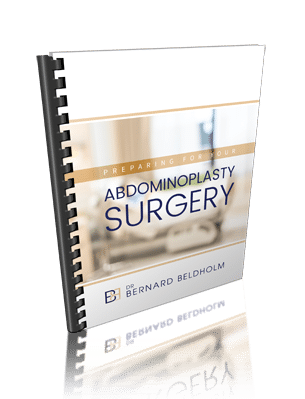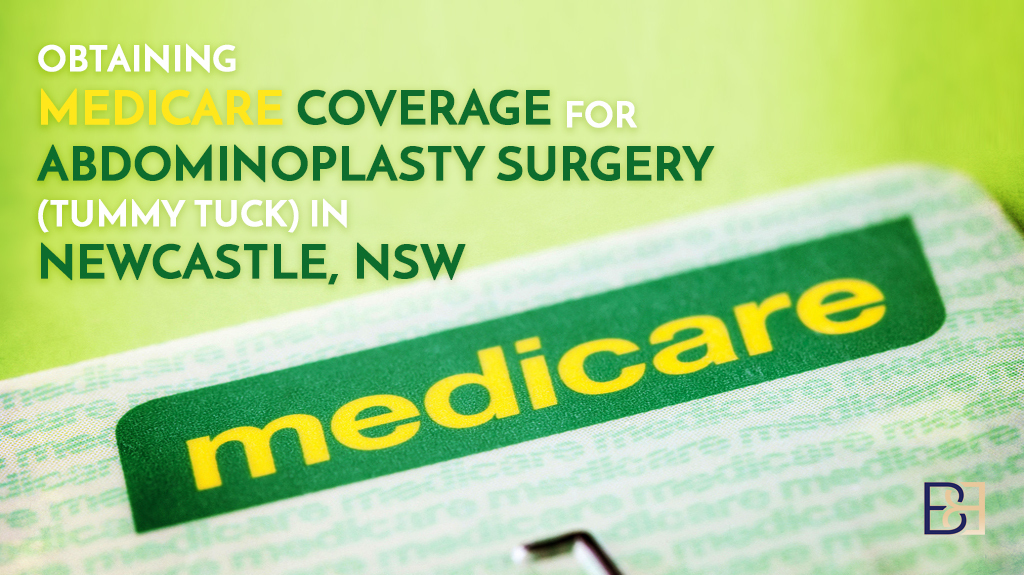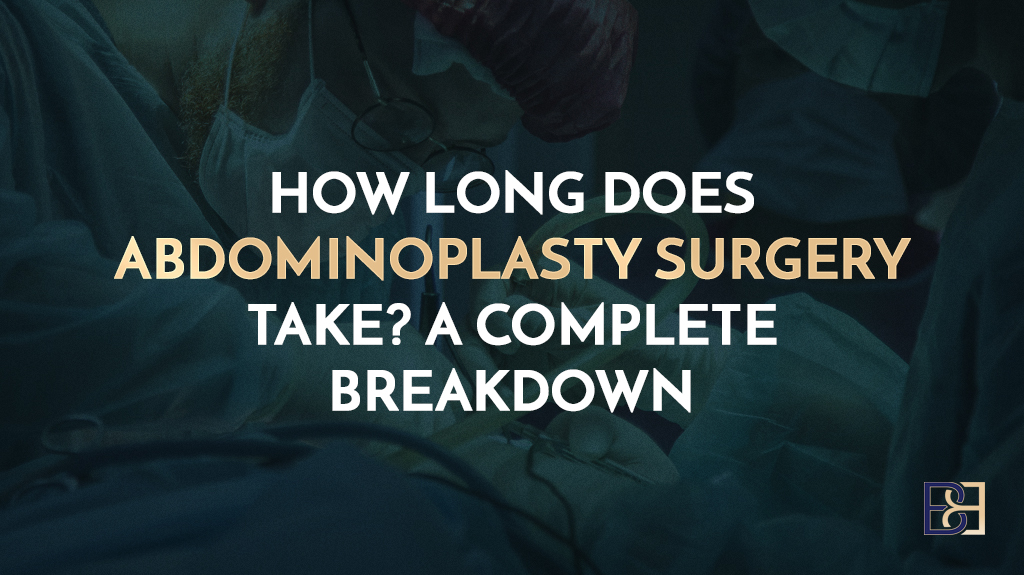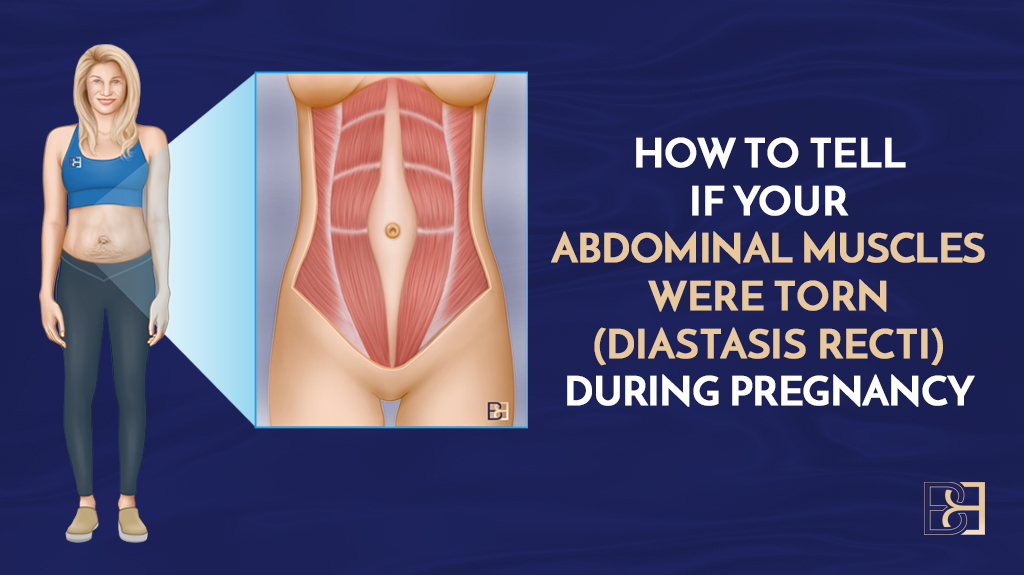A tummy tuck (abdominoplasty) is a major surgery as it removes significant excess skin, the body’s largest organ. Other reasons I categorise it as a major surgery include the risks involved, the complexity of the procedure, the use of general anaesthesia, the length of hospital stay, and the altering of the anatomical structure.
Are you dissatisfied with the loose skin and fat on your abdomen? I suggest you come into my office to discuss whether a tummy tuck (abdominoplasty) could be an option.
However, I must mention that getting this body-contouring procedure is a big decision that requires time to consider because no matter how it might seem, a tummy tuck is a major surgery.
Keep reading this article to understand why I consider tummy tuck (abdominoplasty) a major surgery.
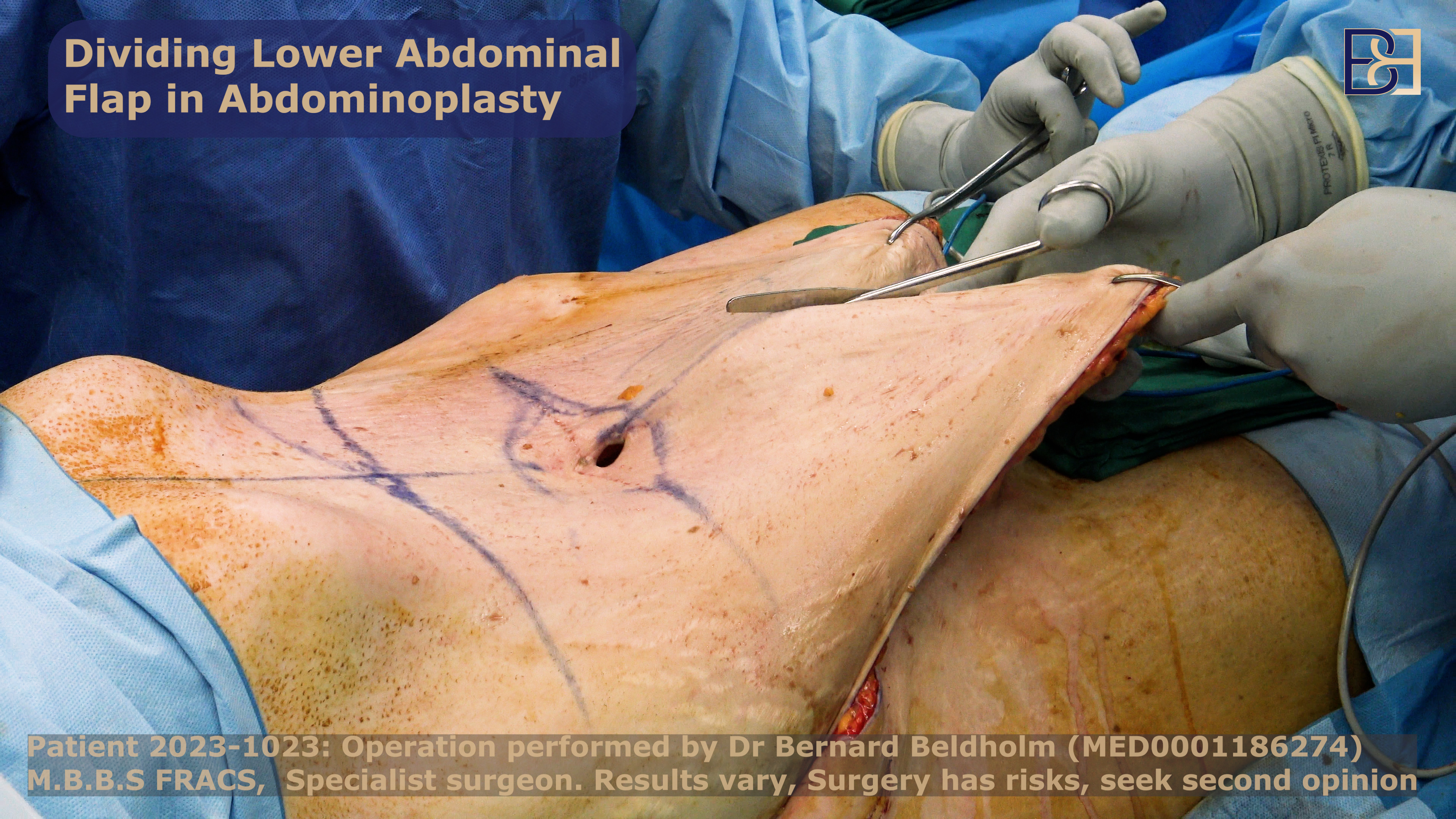
Book your appointment online now
Major Vs. Minor Surgery
Merriam Webster defines a major surgery as surgery involving a risk to the life of the patient, or an operation upon an organ within the cranium, chest, abdomen, or pelvic cavity. Those of us in the medical profession define major organs as any part you cannot live without, such as the heart, brain, liver, and yes, the skin.
Minor surgeries, on the other hand, are procedures that are less invasive, usually involving internal structures and tissues close to the skin’s surface. A good example of a minor surgery is laparoscopic or arthroscopic surgery.
Since major surgeries involve major body organs, they carry more risks, especially surgical ones. Furthermore, the extensive nature of major procedures normally leads to a longer surgery and time under anaesthesia, as well as a more extensive recovery time than minor surgeries.
Why Abdominoplasty is Considered Major Surgery
Below are a few reasons why I classify abdominoplasty as a major surgery.
Complexity of procedure
Surgical site
Use of general anaesthesia
Overnight stay in hospital
Several weeks of recovery time involved
Alters anatomic structure of the body
Risks involved
An abdominoplasty (tummy tuck) is a complex procedure following massive weight loss that involves removing excess skin and excess fatty tissue in the abdominal area, muscle repair (when needed), the use of general anaesthesia, a minimum of one overnight stay in the hospital, several weeks or months of recovery time, and poses several risks. For these reasons, abdominoplasty is considered a major surgery.
The excess skin and fat I’ll remove can cause significant tissue trauma. Furthermore, your procedure might require ** the separation of your abdominal muscles (diastasis recti), making it more invasive.
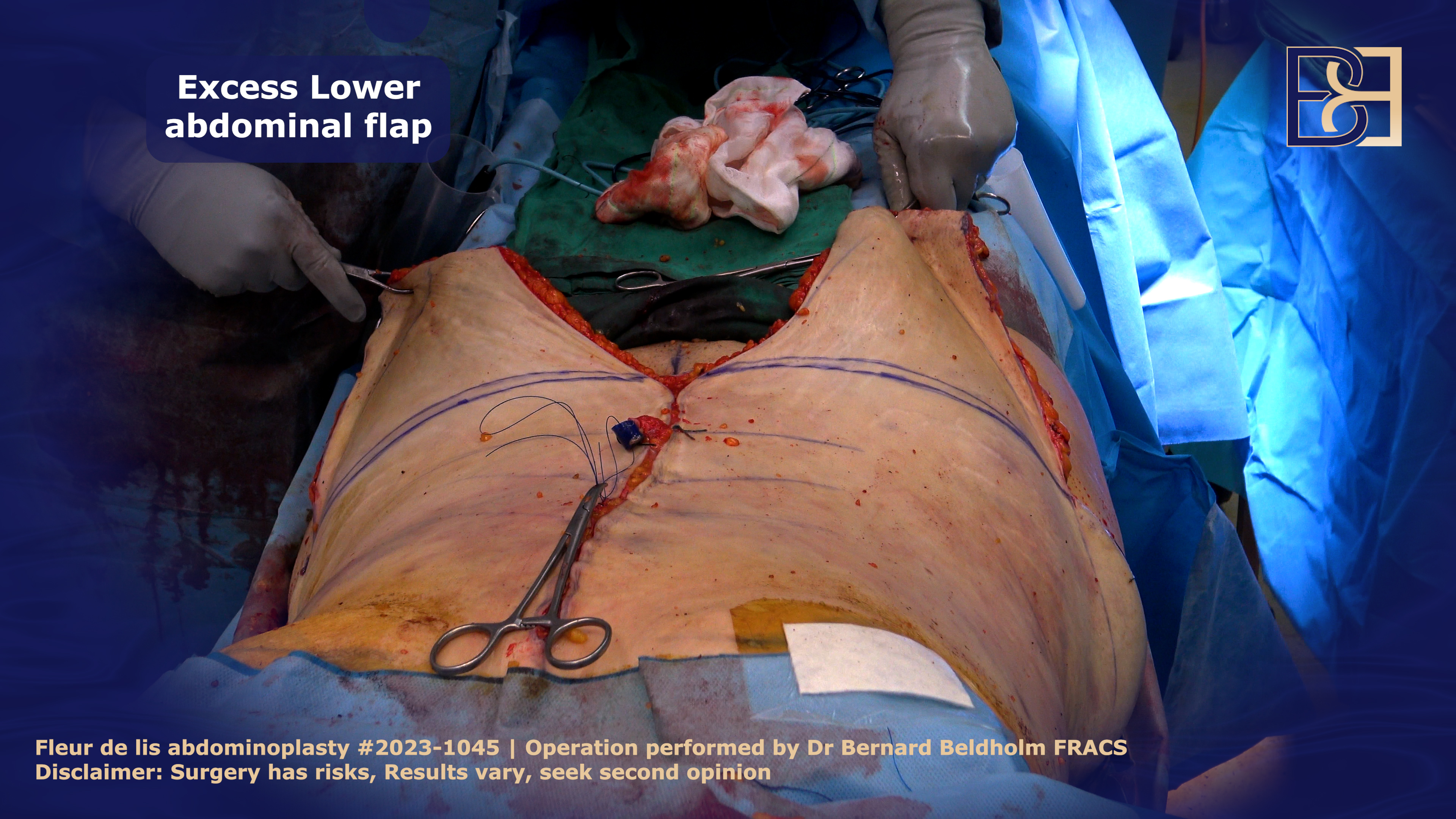
Types Of Abdominoplasty (Tummy Tuck) Surgery
There are different types of tummy tucks, and your ideal choice depends on various factors, such as the amount of excess skin removal required. The four main types include;
Mini Abdominoplasty
Full Abdominoplasty
Extended
Fleur de lis Abdominoplasty

Mini Abdominoplasty Surgery
Though it is the least invasive abdominoplasty procedure, ** less loose skin, and requires a shorter incision, a mini tummy tuck is still considered a major surgery.
During your mini tummy tuck, you will be placed under general anaesthesia. In addition, I will likely perform VASER liposuction to ** the excess abdominal fat. A National Library of Medicine (NLB) study notes that “VASER is the result of ** in surgical instrumentation and technique, proper use of wetting solutions, and knowledge about the best use of ultrasound for fat fragmentation. With its thinner cannulas and decreased use of ultrasonic energy, it allows greater emulsification of fat, creates more tunnels, diminishes the operative time, preserves vessels and nerves, and causes less pain and hematomas.”
Another property that makes a mini tummy tuck a major surgery is the risks involved, including discomfort, numbness, bruising, scarring, and swelling, though recovery from a mini abdominoplasty procedure is shorter than other tummy tuck procedures. You should consider coming for a mini abdominoplasty procedure if you wish to get rid of the less ** skin and fat from your abdominal region. We will discuss several factors, such as your medical history and lifestyle, to determine if you’re an ideal candidate for a mini tummy tuck.
If you’re wondering how much your mini tummy tuck will cost, let’s consider the following factors:
A mini tummy tuck is less invasive, thereby, your cost will be less than it would be for a full tummy tuck.
You may not need to stay overnight, and if you do, it will likely be for one night only, therefore, your hospital fees will be minimised.
If you qualify for an MBS ITEM Number, Medicare could cover a portion of your surgery.
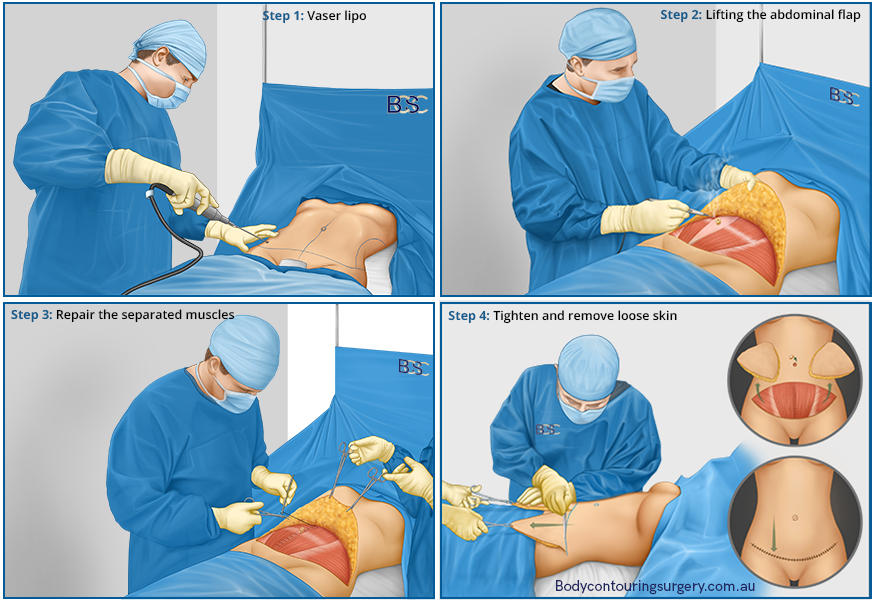
Full Abdominoplasty Surgery
A full abdominoplasty procedure, which is a more invasive procedure than a mini tummy tuck, is considered major surgery for the same reasons outlined above.
Depending on the amount of excess skin, I will place a horizontal incision on your lower abdomen, running from hip to hip. If there’s more significant skin, The result is a more extended incision(s) than required for a mini tummy tuck.
The more extensive the incision is, the more likely complications are possible. Some major risks of a full tummy tuck include infection, blood clots, prolonged swelling, and visible incision scars.
Your abdominal area becomes delicate and vulnerable after your tummy tuck, which requires ample time to heal. In fact, it will take two to four weeks until you’re able to resume normal activities. However, the incision will take as many as 12 months to fully heal.
A full tummy tuck might cost more than a mini abdominoplasty for a number of reasons, including the fact that you will have to spend a few nights in the hospital as we track your progress. If your procedure is deemed medically necessary, however, Medicare could refund you for a portion of your fees, so the costs would be minimised. I will explain and help you to sort out the costs and insurance requirements when we meet for our consultation.

Extended Tummy Tuck
An Extended Tummy Tuck is a surgical procedure designed to remove excess skin and fat from the abdomen and flanks, ** the contour and waistline of your lower back. The surgery involves a longer incision compared to a traditional tummy tuck, extending around the hips, which allows for more extensive tightening of loose abdominal muscles and remove excess tissue. The surgery is ideal for patients who have experienced significant weight loss and are left with loose skin and fat.

Fleur De Lis Abdominoplasty
Fleur de lis is more extensive than a full tummy tuck, making it more invasive. As your FRACS surgeon, I will make both horizontal and vertical incisions in your abdominal region, creating an inverted T pattern. This allows me to address the significant loose skin and abdominal fat in the upper and lower abdominal areas.
FDL, Fleur de Lis carries several risks, including heavy bleeding, infection, and procedure-specific complications. A significant downside of FDL is the incision scar that is more pronounced than that of a mini or full tummy tuck. Before we can schedule your procedure, I will make a thorough assessment of your general health, medical history, expectations, and lifestyle.
Your Fleur de Lis cost depends on various factors, such as the number of nights you’ll spend in our private hospital, your Medicare coverage, and the complexity of the procedure. The best way to determine this is to come in for a consultation session.
Which Abdominoplasty Surgery Is Best for You?
The main determining factors are the amount of excess skin and fat I will remove and the location. If you require less skin removal, a mini tummy tuck (abdominoplasty) is your option.
I will also consider other key factors, such as skin quality, previous abdominal surgery, lifestyle, and expected results, to recommend an ideal procedure. For instance, if you’ve previously had a major surgery, such as a C-section, I will carefully consider its scarring and location to prevent complications.
Your expected results also matter a lot when choosing your abdominoplasty procedure. For instance, if you wish to repair separated abdominal muscles after your pregnancy (diastasis recti), I recommend a full or extended abdominoplasty.
No matter how you want me to contour your abdomen, we must prioritise your **. A National Library of Medicine study shows that “[t]here is no minor procedure or minor surgery if there is a complication! Though generally **, complications can occur even in the best of hands. Hematoma and bruises, seroma formation, nerve damage causing sensory or motor loss, infection, scarring, blood loss, and complications of anaesthesia can occur in any surgery.
It is essential to minimise risks by careful patient selection by taking a detailed history and examination.”
I have performed tummy tuck procedures for over 16 years and am highly qualified to advise, operate, and offer a personalised post-surgery care plan.

FAQs
The following section will dive deeper into your tummy tuck procedure.
How long does a tummy tuck surgery take?
The length of time spent in surgery during a tummy tuck varies depending on the abdominoplasty type. A standard tummy tuck takes about three to five hours in the operating room. A mini tummy tuck is less invasive compared to other abdominoplasty options, and it takes about one to two hours under general anaesthesia. Other, more invasive procedures, such as a body lift take up to eight hours.
Depending on your abdominal skin laxity, I could recommend incorporating VASER liposuction to get rid of more excess fat.
The inclusion of VASER liposuction means you’ll spend an extra hour in the operating room.
Why should I stop smoking before and after my abdominoplasty?
A tummy tuck is a major surgery, and it’s your responsibility to help reduce post-surgical complications. Smoking significantly increases the risk of developing these complications. It causes poor wound healing, increasing the risk of infection.
An NLB study shows that “[s]moking has a negative impact on skin health. Numerous studies have effectively linked smoking with delayed wound healing and healing complications. Research has identified cigarette smoking affects wound healing at a cellular level.”
The nicotine content constricts your blood vessels, increasing the chances of developing blood clots. Smoking also increases the chances of scar tissue forming, affecting your tummy tuck final results. The negative effects are many; it can also lead to “Smoker’s Lung.”
I recommend you quit smoking for about six weeks before and after your procedure to reduce risks.
What is the best way to reduce abdominoplasty scarring?
Any major surgery, including an abdominoplasty, leaves a scar. If developing this tummy tuck scar in your abdominal region is a concern, here are some practical tips I have compiled during my abdominoplasty experience you can consider;
Avoid smoking to **optimal wound healing and reduce the chances of visible and prominent scars.
Follow the personalised post-surgery guidelines I will provide to you. These instructions will cover everything from taking care of your incision to wearing your compression garment correctly.
Maintain a stable weight to avoid affecting your tummy tuck results.
I will make further recommendations, such as using scar reduction products and avoiding sun exposure, during our consultation.
When should I expect my tummy tuck results?
Your tummy tuck results will show up a few months after your procedure. This is because your body needs time to heal and the swelling to subside.
In the first weeks after your abdominoplasty, your abdominal area will be bruised and swollen. With time, the swelling subsides, the incision area becomes better, and you’ll begin to notice an ** abdominal contour.
Remember, each patients’ results will be different, and what works for one might not necessarily work for others.
Book your appointment online now
Dr. Beldholm’s Final Thoughts
So, is abdominoplasty major surgery? We’ve established that your tummy tuck (abdominoplasty) procedure is a major surgery. I’d like to invite you to schedule a consultative session where we’ll talk about your goals, assess your condition, and plan your ideal tummy tuck surgery.
References
1. Martin D, Mantziari S, Demartines N, Hübner M; ESA Study Group. Defining Major Surgery: A Delphi Consensus Among European Surgical Association (ESA) Members. World J Surg. 2020 Jul;44(7):2211-2219
2. Scott MJ, Miller TE. Pathophysiology of major surgery and the role of enhanced recovery pathways and the anesthesiologist to improve outcomes. Anesthesiol Clin. 2015 Mar;33(1):79-91.
3. Liu D, Zhu L, Yang C. The effect of preoperative smoking and smoke cessation on wound healing and infection in post-surgery subjects: A meta-analysis. Int Wound J. 2022 Dec;19(8):2101-2106
4. de Souza Pinto EB, Abdala PC, Maciel CM, dos Santos Fde P, de Souza RP. Liposuction and VASER. Clin Plast Surg. 2006 Jan;33(1):107-15, vii
5. Dobson GP. Trauma of major surgery: A global problem that is not going away. Int J Surg. 2020 Sep;81:47-54.
6. Ellis P. The impact of smoking on wound healing: the role of the nurse. Br J Nurs. 2018 Mar 22;27(6):S10-S14.
7. Courtney A, Clymo J, Dorudi Y, Moonesinghe SR, Dorudi S. Scoping review: The terminology used to describe major abdominal surgical procedures. World J Surg. 2024 Mar;48(3):574-584.
8. McRobert J. Smoking and its effects on the healing process of chronic wounds. Br J Community Nurs. 2013 Mar;Suppl:S18, S20-3.
9. Kean J. The effects of smoking on the wound healing process. J Wound Care. 2010 Jan;19(1):5-8
10. Silverstein P. Smoking and wound healing. Am J Med. 1992 Jul 15;93(1A):22S-24S.

